41 food labels serving size
Serving Size on the New Nutrition Facts Label | FDA - U.S. Food and ... The serving size is shown as a common household measure that is appropriate to the food (such ... inspection.canada.ca › food-labels › labellingServing sizes and reference amounts - Information within the ... The amount must be indicated under the Nutrition Facts heading using the phrase "Per (naming the serving size)", "Serving Size (naming the serving size)", or "Serving (naming the serving size)". The serving size is a quantity of food that can be reasonably consumed at a single eating occasion [item 1 of the Table to B.01.401, FDR ].
FDA Food Product Labeling & Packaging Requirements - ESHA Food Product Labeling and Packaging 101. The FDA regulates most packaged foods sold in the United States and has specific requirements for what elements a package must contain (e.g. a Nutrition Facts panel, ingredient statement, etc.). In order to sell your food products, you must comply with the FDA's packaging laws unless your operation is ...

Food labels serving size
Food Serving Sizes Have a Reality Check | FDA In some cases, the reference amounts used to set serving sizes are smaller. Today's individually packaged yogurts more often come in 6-ounce containers, versus the previous 8-ounce ones. The FDA is... The Basics of the Nutrition Facts Label - Academy of Nutrition and ... The following is a quick guide to reading the Nutrition Facts label. Step 1: Start with the Serving Size Look here for both the serving size (the amount people typically eat at one time) and the number of servings in the package. Compare your portion size (the amount you actually eat) to the serving size listed on the panel. Consumer Survey: Understanding Portion and Serving Sizes Regardless of food or beverage category, about half say they try to eat close to the serving size listed on packaging. The top-ranked reasons for paying attention to portion sizes are to help control weight (36% ranked in top 2) and to help avoid eating too much of certain foods (30%).
Food labels serving size. How to Read Food Labels: Your Complete Consumer Guide The food must have a serving size of >30 g (1 ounce) and fewer than 40 calories per serving. Low-calorie junk food is still junk food — often padded with a lot of air (like certain kinds of chips) or water (like sweetened drinks). Reduced-calorie: The food must contain at least 25% fewer calories than the original version of the product. CFR - Code of Federal Regulations Title 21 - Food and Drug Administration (ii) Serving sizes recommended in comments; (iii) Serving sizes used by manufacturers and grocers; and (iv) Serving sizes used by other countries. (6) Because they reflect the amount customarily consumed, the reference amount and, in turn, the serving size declared on the product label are based on only the edible portion of food, and not bone ... FDA Nutrition Label Update: How to Read the New Food Label | U.S. News The FDA has now changed the serving size of ice cream to two-thirds of a cup. On the new labels, the serving sizes represent the amount that a person is actually likely to eat or drink rather than ... Food Labeling & Nutrition | FDA Food labeling is required for most prepared foods, such as breads, cereals, canned and frozen foods, snacks, desserts, drinks, etc. Nutrition labeling for raw produce (fruits and vegetables) and ...
Understanding Nutrition Labels The serving size is important to note because the reading of the rest of the information on the label is dependent on it. The calorie information, nutrient information, and the percent daily value ... › food-labels-worksheet6 Free Printable Food Labels Worksheet & Different Types There are six types of labels used to convey this information to consumers. These labels include: Serving Size Label. Is the serving size, which indicates how much food equals one serving size – for example, it might be 1 cup or 1/2 cup or 1 ounce for a beverage- and it also lists how many servings are in a package. Nutrition Facts Label › food › nutritionServing Size vs Portion Size Is There a Difference Dec 18, 2018 · Serving size is a standardized amount of food. It may be used to quantify recommended amounts, as is the case with the MyPlate food groups, or represent quantities that people typically consume on a Nutrition Facts label. Portion size is the amount of a food you choose to eat — which may be more or less than a serving. › food › new-nutrition-facts-labelHow to Understand and Use the Nutrition Facts Label | FDA Feb 25, 2022 · The information in the main or top section (see #1-4) of the sample nutrition label (below) can vary with each food and beverage product; it contains product-specific information (serving size ...
13 Misleading Food Label Claims and How Not to Be Tricked - Sentient Media Per the FDA, food items labeled as being cholesterol-free cannot contain more than 2 milligrams of cholesterol per serving size, whether a snack item or meal. Consumers might expect that the ingredients in food labeled as being cholesterol-free would not have any cholesterol in them. How to Easily Calculate the Serving Size in Recipes | livestrong 2. Divide the Recipe into Servings. Once you know how much the entire finished dish weighs, divide the weight by the number of servings, which is usually listed in the recipe ("serves six," or "serves eight," for example). Round the result to an easy-to-remember number to find the average serving size. For example, if your lobster mac and ... How To Read Food and Beverage Labels - National Institute on Aging The serving size on the label is based on the amount of food that people may typically eat at one time and is not a recommendation of how much to eat. Read more about serving and portion sizes . The remainder of the label information is usually based on one serving of the food or beverage (see Food Label A). Video: Updated serving sizes on food labels - Dr. Lisa Young, PhD, RDN On this brief video, I discuss what the new food label serving sizes mean for you (Spoiler alert: the FDA is not suggesting you eat more.) Contrary to what many people think, standard serving sizes on food labels are NOT recommendations. There really is no one-size-fits-all serving size. Here's the LINK. I hope you enjoy it!
Food Labeling Requirements - TheMarketatdelval.com When making a food product, manufacturers must determine the proper serving size. When serving single serving food, it is critical to use a descriptive container, such as one cup or one container. In addition to the five nutrients listed on the nutrition facts label, the nutrition facts label should include a list of calories, total fat, sodium ...
Food Literacy | Health Literacy | CDC When people use the information on food labels regularly, they tend to have better dietary choices and have better health outcomes. ... education and higher income and White people were more likely to correctly calculate the percentage of daily calories a serving size of a food product would have based on a diet of 2,500 calories per day.
How to Read a Nutrition Label, According to Dietitians Serving Size. When you're figuring out how to read a nutrition label properly, you'll need to first reference the food's serving size — typically listed in cups or pieces and the number of grams — and the number of servings in a package (aka servings per container). You might think the serving size on a nutrition label is the amount of that ...
Serving Size Updates on the New Nutrition Facts Label | FDA On the original Nutrition Facts label, the serving size was 1/2 cup (66g), while on the new ...
How to Read a Nutrition Facts Label | Everyday Health Serving sizes With the new label, ... Serving size is the amount of food customarily consumed for a particular food, not the recommended portion size. If, for example, the serving size for a food ...
Serving Size vs. Portion Size, What's the Difference? - Prevention A serving size is defined as a standardized, measured amount of food. This is most commonly used by the United States Department of Agriculture (USDA) in reference to food groups or printed on...
This Is How to Read a Nutrition Facts Label on the Keto Diet Serving Size Serving size is meant to be a measure of the amount that reflects what people really eat, not the amount they should be eating [ * ]. Each nutrient listed on the label refers to the amount of that label contained in one serving, which is usually not the entire package.
› nutritionsource › food-labelUnderstanding Food Labels | The Nutrition Source | Harvard T ... One might assume the small bag to contain 1 serving, but it actually contains 3 servings so that eating the whole bag provides 300 calories. With the updated label, the same size bag would show 1 serving at 300 calories. Keep in mind that the serving size is not a recommendation for everyone about how much to eat, but rather a reference point.
Food Label Reading - What You Need to Know Serving Size:This is the amount of food that people should eat for 1 serving. It is written in cups or ounces and also in metric, such as grams (gm) or milliliters (mL). It is important to remember that "serving size" means the cooked, ready-to-eat part of the food.
Suggested Servings from Each Food Group - Professional Heart Daily ... A serving size is a guide. It's not a recommendation of how much to eat or drink. The Nutrition Facts label on packaged foods will show the calories and nutrients in a typically consumed serving size. It may be more or less than you usually eat, so you might need to do a little math to figure out the calories in a portion.
diabetes.org › making-sense-food-labelsMaking Sense of Food Labels | ADA - American Diabetes Association These food labels are especially helpful if you use carb counting to plan your meals! If you get tripped up on food content claims, you’re not alone. Fat free vs. low fat vs. reduced fat. Low cholesterol vs. reduced cholesterol. It’s confusing, and it can be tough when you’re trying to make the right choices. Serving size
› managing › eat-wellFood Labels | CDC - Centers for Disease Control and Prevention Apr 23, 2021 · Check the Serving size first. All the numbers on this label are for a 2/3-cup serving. This package has 8 servings. If you eat the whole thing, you are eating 8 times the amount of calories, carbs, fat, etc., shown on the label. Total Carbohydrate shows you types of carbs in the food, including sugar and fiber.
How To Read A Food Nutrition Label | Gobble For example, a serving of pasta may be two ounces while a serving of vegetables may be five ounces. In other words: there is no universal definition for "serving size." The serving size listed on food nutrition labels serves as a reference point for calculating how many calories or nutrients are in your food.
Suggested Servings from Each Food Group - American Heart Association A serving size is a guide. It's not a recommendation of how much to eat or drink. The Nutrition Facts label on packaged foods will show the calories and nutrients in a typically consumed serving size. It may be more or less than you usually eat, so you might need to do a little math to figure out the calories in a portion.
4 Things To Look Out For While Buying Packaged Food 1. Serving Size: Every food label has a serving size mentioned on it. While some types of packed food have one serving, others may contain more than one serving. The rest of the information on the label is listed with respect to this serving size. For example, the nutritional facts listed on a box of juice may be according to a serving size of ...
Serving Sizes: Single-Serving Containers vs. Dual-Column ... - ESHA In this case, one serving equals the full bottle and the voluntary serving information is 1/2 bottle. Single-Serving Container Label Example Voluntary Dual-Column Label Example Example 2: 24 fl oz container (24 fl oz / 12 fl oz) x 100 = 200%
Consumer Survey: Understanding Portion and Serving Sizes Regardless of food or beverage category, about half say they try to eat close to the serving size listed on packaging. The top-ranked reasons for paying attention to portion sizes are to help control weight (36% ranked in top 2) and to help avoid eating too much of certain foods (30%).
The Basics of the Nutrition Facts Label - Academy of Nutrition and ... The following is a quick guide to reading the Nutrition Facts label. Step 1: Start with the Serving Size Look here for both the serving size (the amount people typically eat at one time) and the number of servings in the package. Compare your portion size (the amount you actually eat) to the serving size listed on the panel.
Food Serving Sizes Have a Reality Check | FDA In some cases, the reference amounts used to set serving sizes are smaller. Today's individually packaged yogurts more often come in 6-ounce containers, versus the previous 8-ounce ones. The FDA is...


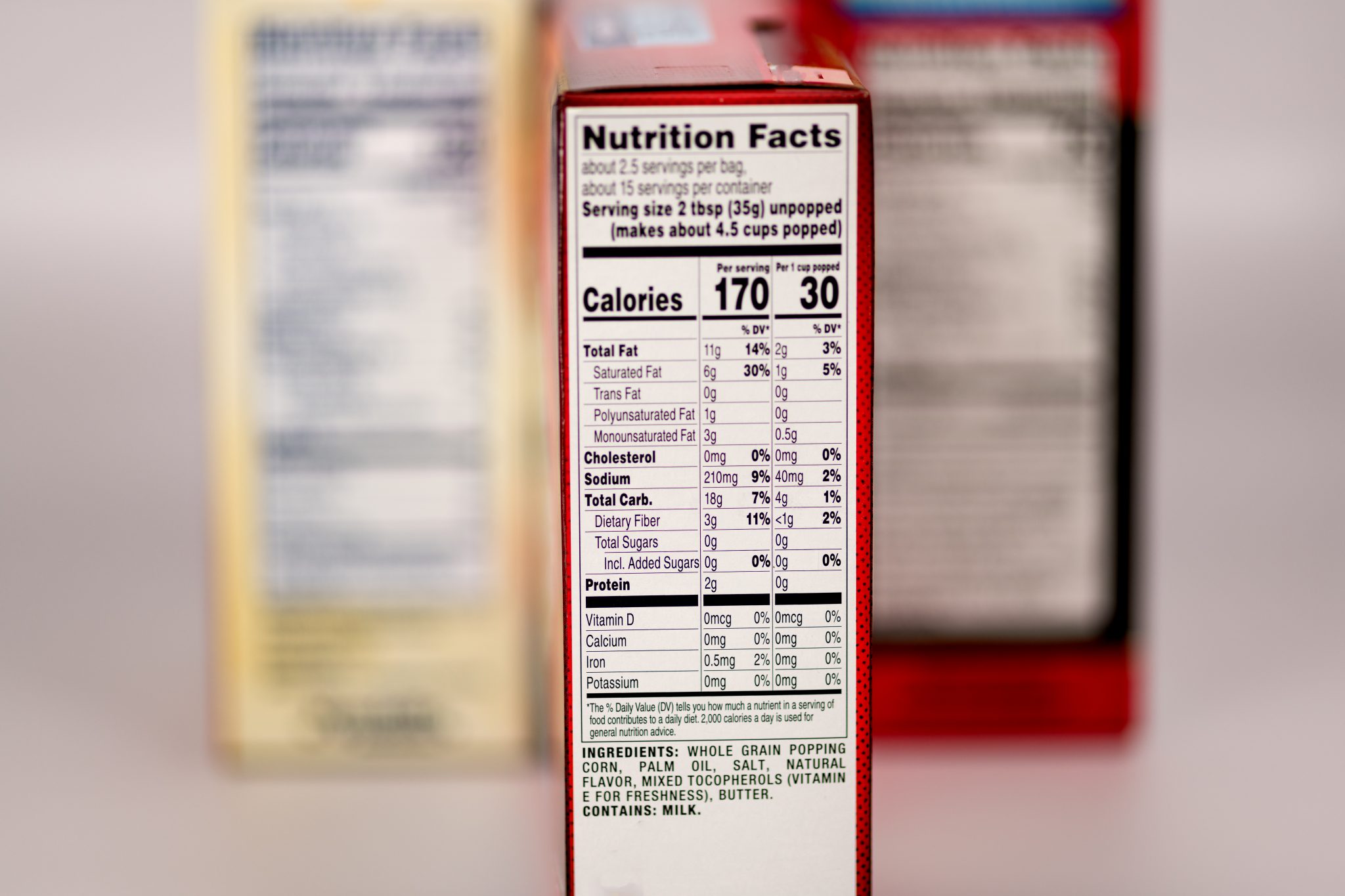





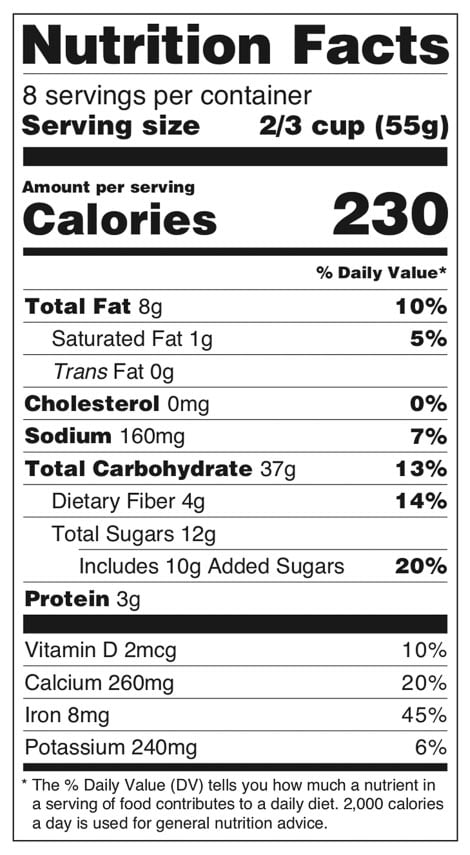
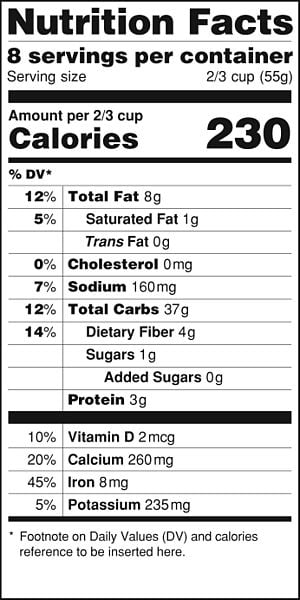
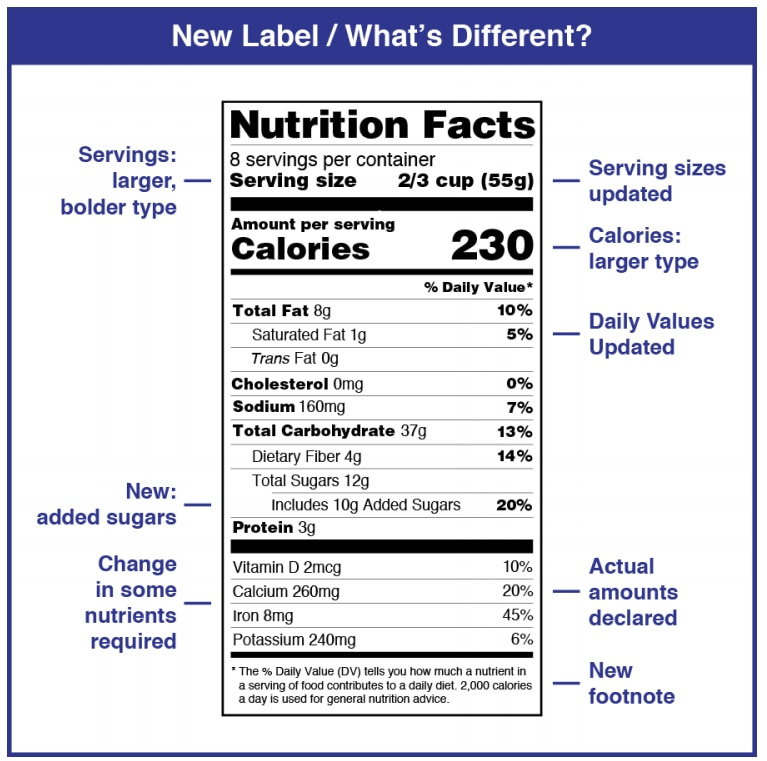

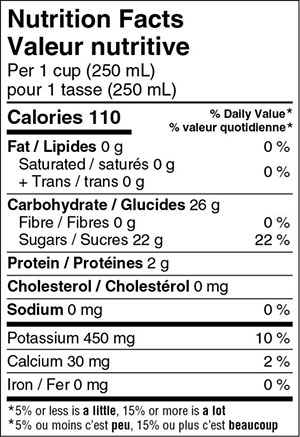
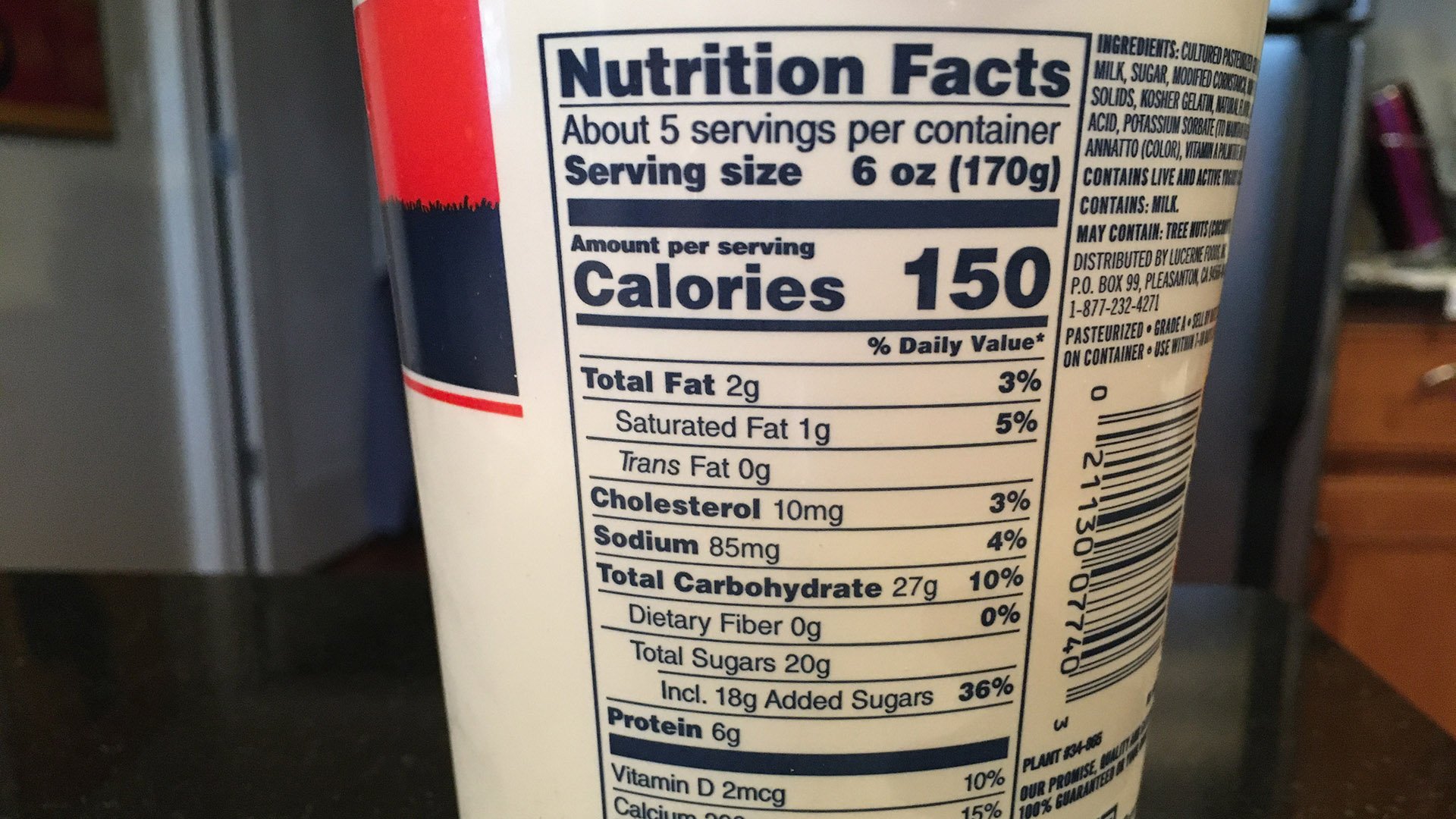

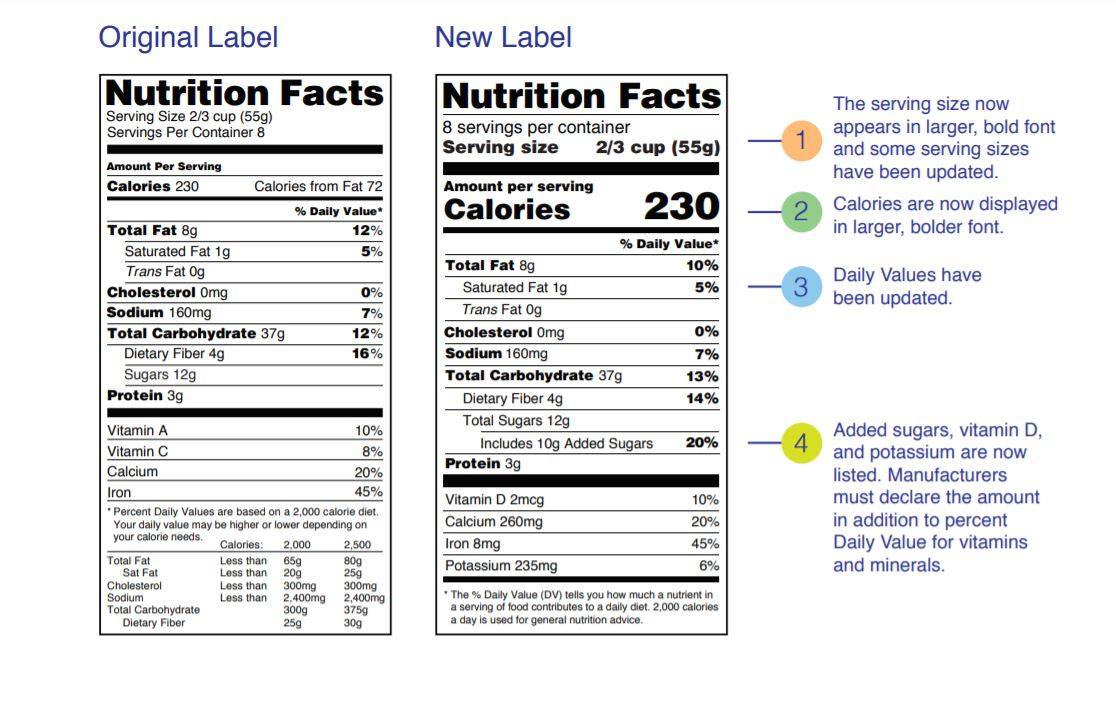
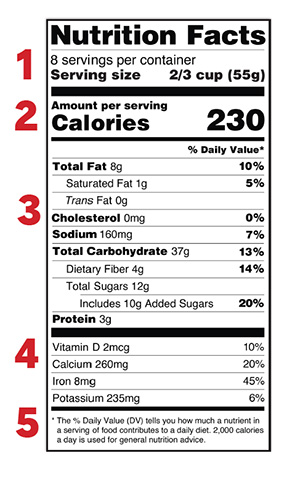


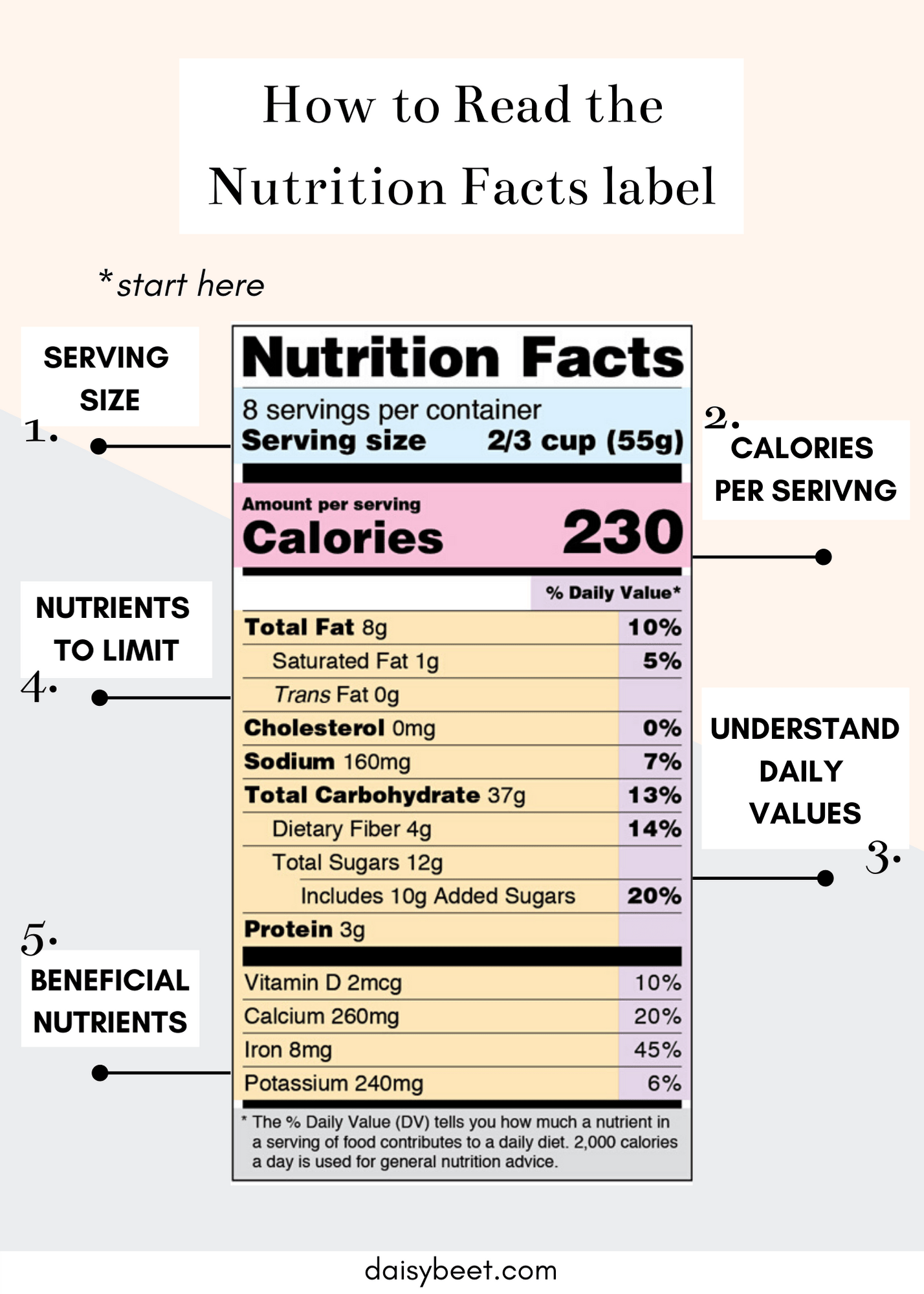
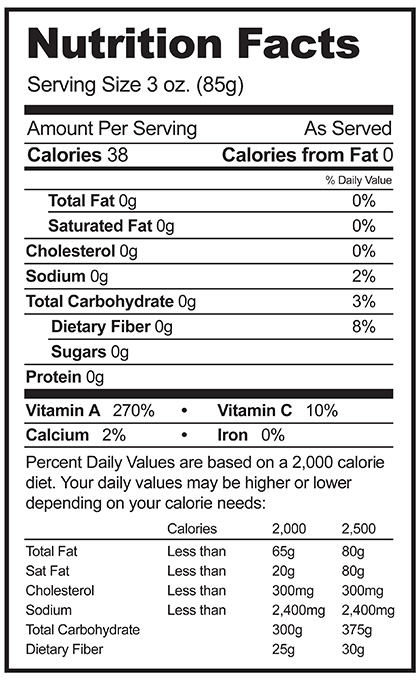
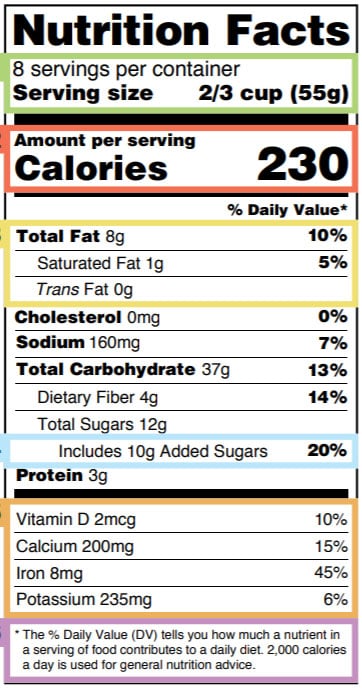


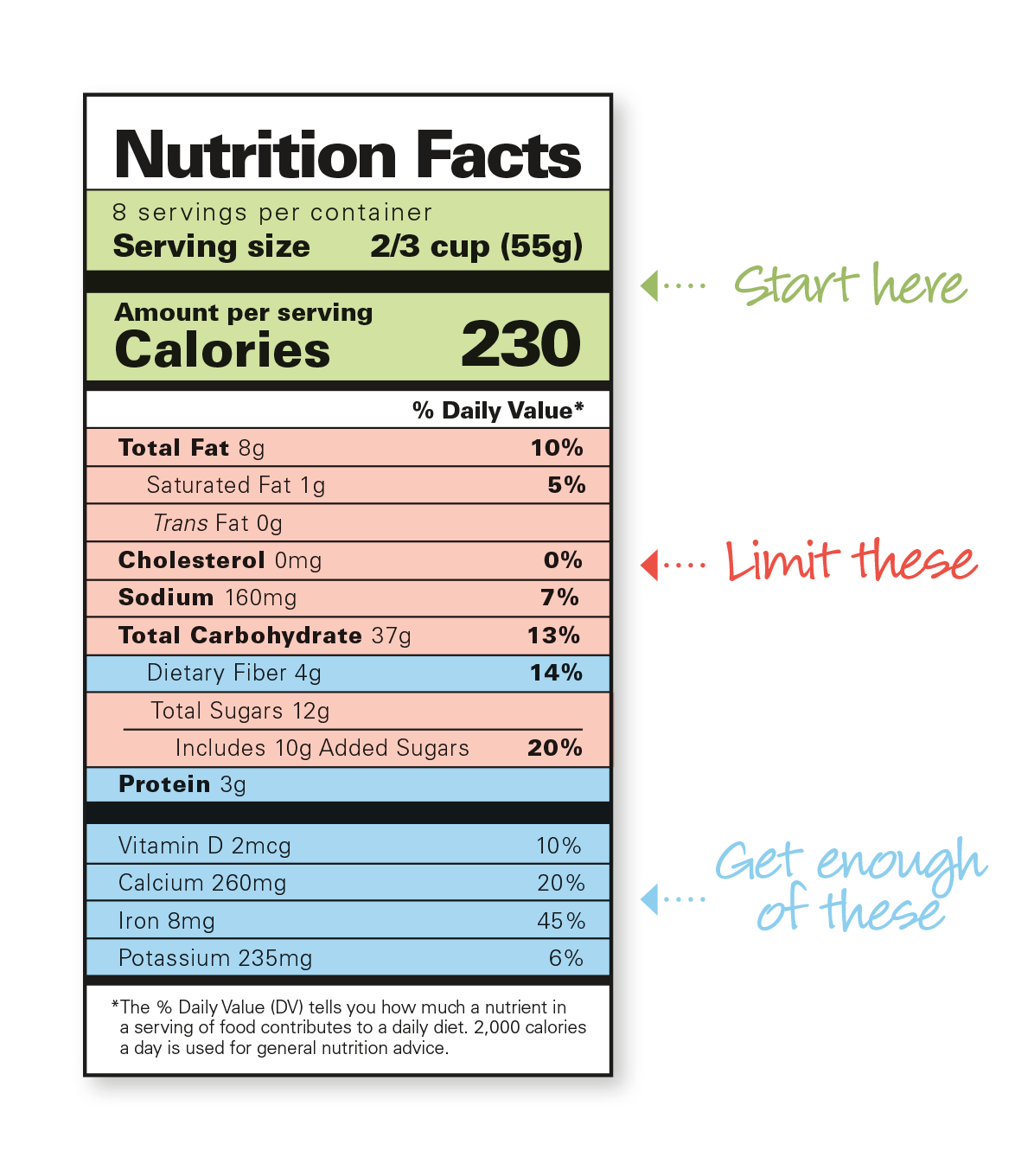

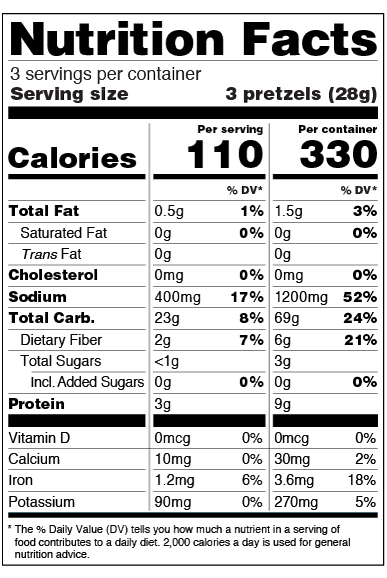
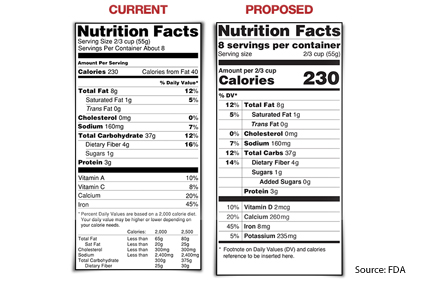

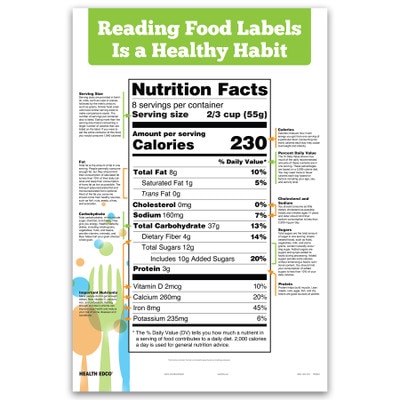
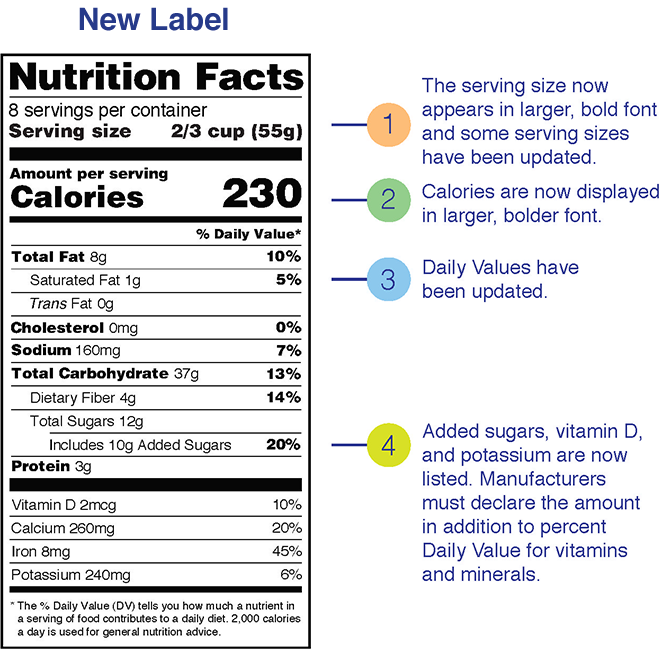

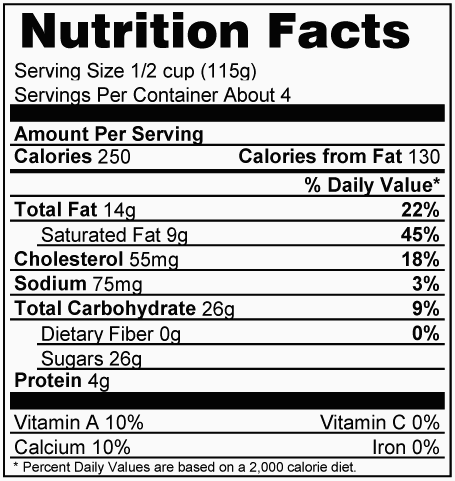



/Untitled-design-1--5755c3703df78c9b46903dab.jpg)

Post a Comment for "41 food labels serving size"